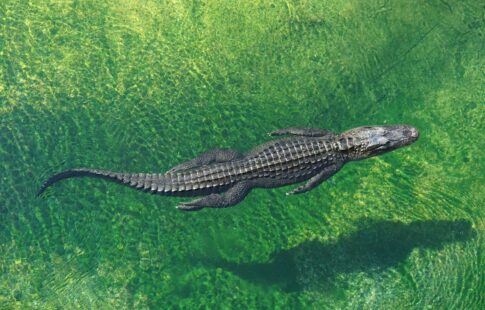
What Animals Live in Coral Reefs: The Amazing World of Reef Life
We are reader-supported. When you buy through links on our site, we may earn affiliate commission.
Understanding what animals live in coral reefs is the first step to understanding the vital role of reefs in our world. Thousands of different species inhabit the world’s coral reefs, from the coral itself to sharks and manta rays. There are several main categories of animals often found in reef habitats.
1. Corals
Many people mistakenly assume coral is a type of plant. However, it is actually an animal that relies on a unique symbiotic relationship to survive. It’s easy to miscategorize corals as plants. After all, they don’t look like animals and stay in one place virtually their entire lives.
The reason coral is a type of animal is largely because it does not create its own food like plants do. Coral is a colony organism made of smaller organisms called polyps, which root on the ocean floor or on the hard skeleton other polyps form. One “piece” of coral as we see it is actually many small polyps.
Coral has a symbiotic relationship with a type of algae called zooxanthellae, with both organisms helping one another survive. Interestingly, coral is part of the same phylum, or animal group, as jellyfish.
The importance of coral can’t be understated. These animals are the heart of any reef. They provide shelter for other species to reproduce, live and find food. They help filter the water and prevent shorelines from corroding. Coral feeds on debris in the water, so it also keeps reef water clear and clean. Without coral, reefs and the thousands of species they support die.
2. Crustaceans
There are many species of crustaceans commonly found around coral reefs, including lobsters, shrimp and a variety of crabs. This is a very diverse group, even among the many animals that live in coral reefs.
For example, there are several species of shrimp commonly found in reefs. Some are remarkably helpful for other animals, namely the cleaner shrimp. This little shrimp feeds on parasites and damaged scales found on fish. Some fish will even let it clean out their mouths without eating it!
Other crustaceans are less friendly. For example, the Harlequin shrimp only eats starfish and feeds on them by flipping them over and eating their undersides. Large arrow crabs are known for pulling their prey, feather duster worms, straight out of their tubes.
Most coral reef crustaceans are scavengers, such as hermit crabs, anemone crabs and spiny lobsters.
3. Sharks
Many people who wonder what animals live in coral reefs are hoping to hear about sharks, which have a somewhat misleading reputation. Sharks are predators, but they are also a crucial part of any reef ecosystem.
Without sharks around to manage the population of fish, other species living on the reef can grow out of control. This strains the capacity of the reef and all the organisms in the food chain. So, the fear-driven hunting of reef sharks by humans is a serious issue. In fact, sharks are “functionally extinct” at an estimated 20% of the world’s reefs.
There are many types of reef sharks but the gray and whitetip reef sharks are among the most common. Many other species are found in or around reefs including silky sharks, blue sharks, nurse sharks, leopard sharks, horn sharks and even larger species like hammerhead sharks.
Many of these species are actually non-threatening to humans. For instance, the nurse shark, horn shark and leopard shark are all considered harmless to humans under most circumstances. Most reef sharks have no interest in attacking humans, contrary to popular belief.
4. Rays
Closely related to sharks are rays including, but not limited to, stingrays. Rays are in the same animal group as sharks and share many of the same traits despite their different body shapes. Rays are also known for being dangerous, although they are more elusive than most sharks.
It’s impossible to leave out rays when exploring what animals live in coral reefs. The famous and striking manta ray is a common reef inhabitant. They can grow to have a “wingspan” of over 15 feet! Despite mantas’ large size, they are not threatening to humans.
Not all rays are stingrays. The manta ray is one example of a non-stinging ray. There are a few varieties of stingrays that live in coral reefs, though, such as the blue spotted stingray and the southern stingray.
One especially unique reef ray is the lesser electric ray or “spotted torpedo ray”. This ray doesn’t sting but can electrically shock other animals using a pectoral disc in its back.
5. Reptiles
Anyone wondering what animals live in coral reefs probably already knows of one: the famous sea turtle. These large, friendly turtles are just one of several different marine reptiles found around coral reefs. In fact, there are even several distinct species of sea turtles!
The most well-known sea turtle is the green sea turtle, largely thanks to the character Crush in Finding Nemo. Green sea turtles grow to about 40 feet long and live well over 50 years. They’re most common in the Atlantic ocean, particularly off the coast of Florida. Unfortunately, human activity and habitat loss are threatening the survival of this species.
Along with green sea turtles, several other marine reptiles are common reef inhabitants. These include leatherback sea turtles, loggerhead sea turtles, hawksbill turtles, olive ridley turtles and sea snakes (not to be confused with coral snakes, which live on land).
6. Octopi and Squids
Octopi and squids are the most well-known members of an animal group known as mollusks, which also includes snails, clams, scallops, chitons, nudibranchs and nautiluses. People exploring what animals live in coral reefs would be unwise to overlook this group. It includes some animals that are virtually unchanged from the era of the dinosaurs!
For example, the nautilus is not only the only cephalopod with a shell but also the oldest species of cephalopod on Earth. It has existed for over 500 million years! To put that into perspective, scientists estimate that the dinosaurs went extinct about 66 million years ago. So, the nautilus is far, far older than the dinosaurs!
Other exciting members of the cephalopods and mollusks family include the pacific octopus, the blue ringed octopus, the atlantic squid and the fascinating cuttlefish. Cuttlefish have three hearts, the ability to count and even color-changing skin.
7. 4000+ Species of Fish
By far the most common and diverse reef inhabitants are fish. Scientists estimate that over 4000 different species of fish live in and around coral reefs, including some of the world’s most famous fish. For example, clownfish and blue tang fish both live in coral reefs. These two species can be seen playing Marlin and Dory in Finding Nemo.
There are countless other amazing fish living in coral reefs. A few allstars include seahorses, butterfly fish, surgeonfish, coral gobies, lionfish, parrotfish and several species of eel. Fish make up the bulk of animal species in many reefs. They can be both predators and prey. Fish are the core of the food chain and a sign of a healthy reef.
Why Reef Life Matters
Why should people care what animals live in coral reefs? After all, we can’t eat most reef animals and many are dangerous to humans. However, reefs are an extremely important part of the global ecosystem, food chain and supply chain. An estimated 500 million people worldwide depend on reefs for food and income.
Coral reefs themselves also protect coastlines by preventing erosion. Their spectacular colors and diverse animal populations draw millions of tourists to famous reefs every year. This creates tourism industries that form a key pillar of economic support for many communities. Scientists have even discovered the sources of new medicines in coral reefs!
Unfortunately, reef life is under significant threat today due to human activity and climate change. Sea level rise, storms, acidification, pollution, overfishing and sheer habitat destruction all threaten the survival of coral reefs. By extension, the thousands of species that depend on reefs and the thousands of species that depend on those species are all under threat, as well.
Understanding What Animals Live in Coral Reefs
Humans may not directly interact with reef animals much, but we are part of the reef ecosystem and the ocean ecosystem at large. Understanding what animals live in coral reefs is an important first step in understanding why reefs must be protected.
Scientists and conservation experts all over the world are hard at work developing strategies to preserve coral reefs. We can all help by reducing our pollution and emissions and supporting the work of conservation nonprofits like Coral Reef Alliance and Oceana.
Share on
Like what you read? Join other Environment.co readers!
Get the latest updates on our planet by subscribing to the Environment.co newsletter!
About the author
Steve Russell
Steve is the Managing Editor of Environment.co and regularly contributes articles related to wildlife, biodiversity, and recycling. His passions include wildlife photography and bird watching.





